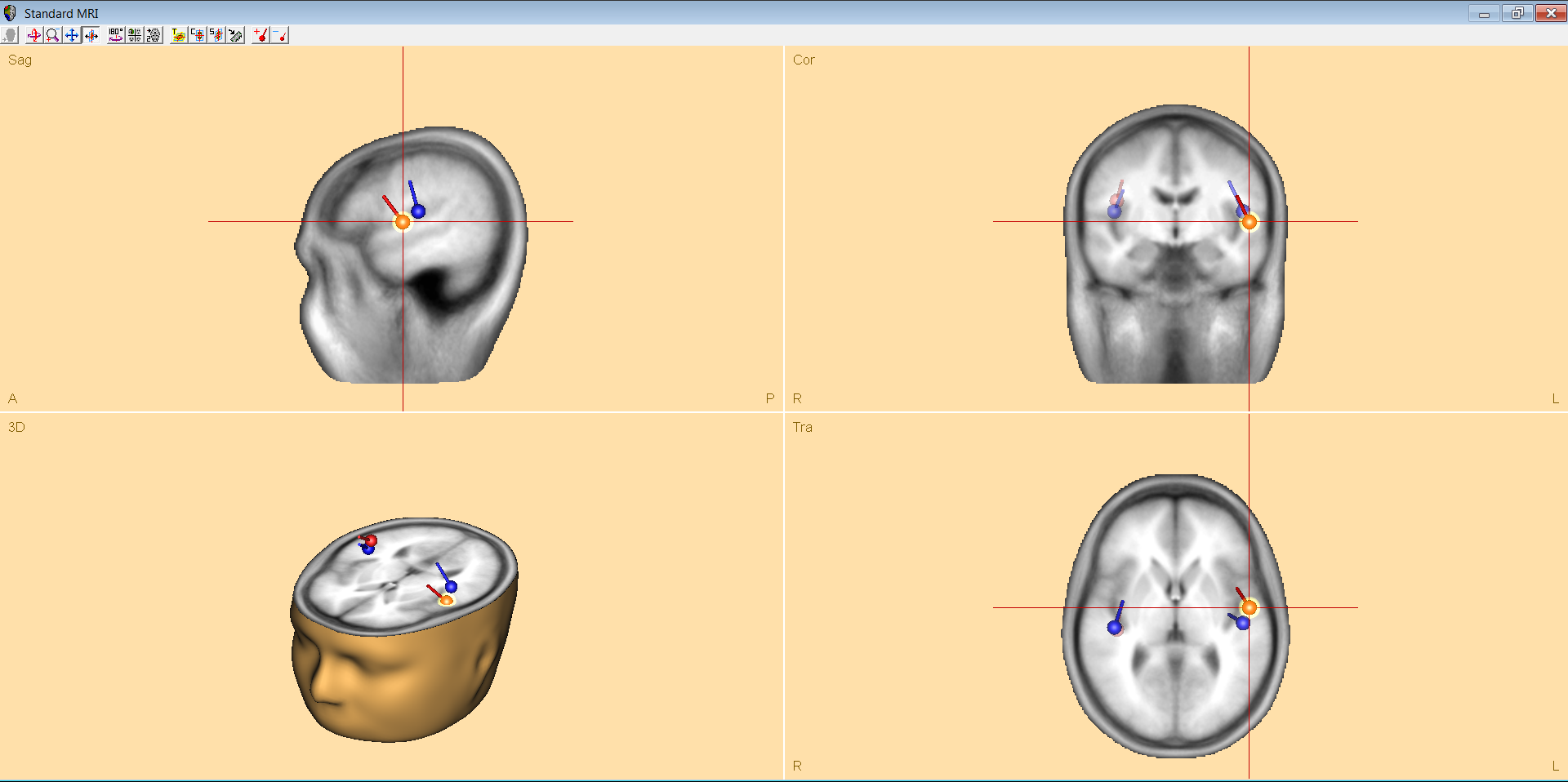Section: Software and Platforms
FindSources3D
Participant : Juliette Leblond [corresponding participant] .
Status: Currently under development. A stable version is maintained.
This software is developed in collaboration with Maureen Clerc and Théo Papadopoulo from the Athena Project-Team, and with Jean-Paul Marmorat (Centre de mathématiques appliquées - CMA, École des Mines de Paris).
FindSources3D (CeCILL license, APP version 2.0 (2012): IDDN.FR.001.45009.001.S.A.2009.000.10000) is a software dedicated to source recovery for the inverse EEG problem, in 3-layer spherical settings, from point-wise data (see http://www-sop.inria.fr/apics/FindSources3D/ ). Through the algorithm described in [8] and Section 4.2 , it makes use of the software RARL2 (Section 5.1 ) for the rational approximation step in plane sections. The data transmission preliminary step (“cortical mapping”) is solved using boundary element methods through the software OpenMEEG (its CorticalMapping features) developed by the Athena Team (see http://www-sop.inria.fr/athena/software/OpenMEEG/ ). A new release of FindSources3D is now available, which is being demonstrated and distributed to the medical team we maintain contact with (hosp. la Timone, Marseille). A further release is currently under development, due to the strong interest for this software by the German firm BESA GmbH (see http://www.besa.de/ ), involved in EEG software for research and clinical applications, and a deeper collaboration with this company has been started this year. Figure 4 shows the good results of a two sources distribution recovered by FindSources3D from potential values at electrodes on a sphere (scalp) generated by BESA's simulator, and then back to a more realistic head geometry. There, the achieved localization error is small enough, and FindSources3D provides suitable initial guess to heavier dedicated recovery tools, along with an estimation of the number of sources which may be incorporated to the software as an additional functionality (at the moment, the user is still involved in this estimation). Taking into account several time instants will be considered next.



